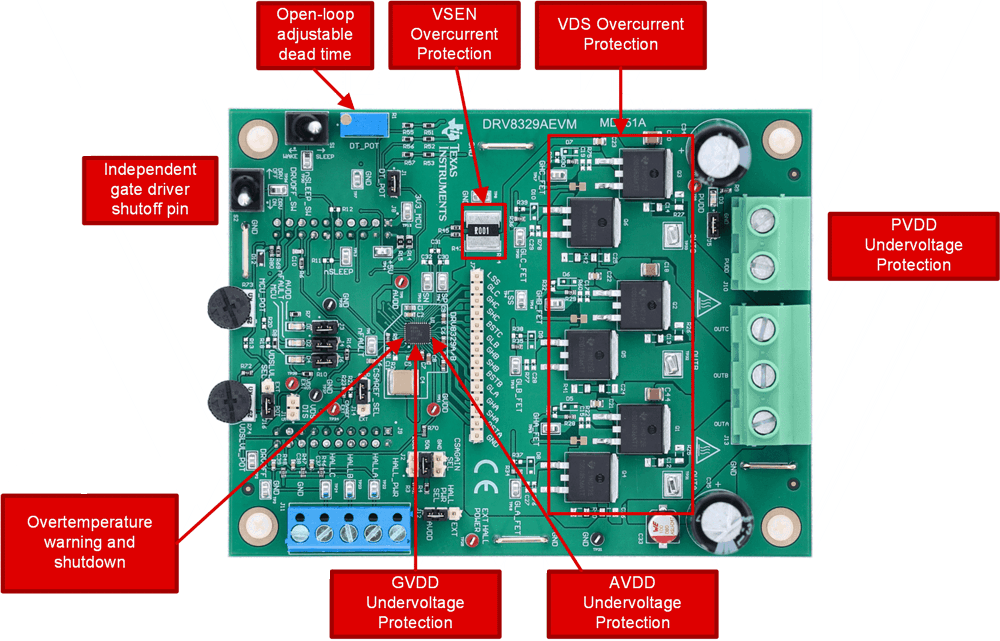SLVAFG1 September 2022 DRV8329
2.2 Robustness
In addition to delivering large amounts of torque, the system needs to be protected from unforeseen effects due to external load conditions, PCB parasitics, ambient temperatures, or materials such as dust. Problems that can occur during power tool operation include overcurrent conditions, motor undervoltage, supply undervoltage, or overtemperature. A well-designed PCB layout can combat many of the most frequently faced issues during evaluation, but a suitable BLDC gate driver should be prepared to disable the gate driver circuits quickly if a fault occurs. As tools continue to have high standards of quality and performance, it also is important that backup forms of protection exist, such as redundant device protection features and external circuits to shutoff the gate drivers or disconnect the supply.
The DRV8329 includes two forms of overcurrent protection to protect the power stage from short-circuit conditions: VDS (MOSFET drain-to-source voltage) and VSEN (sense resistor voltage) overcurrent protection. VDS overcurrent protection is set by an analog VDSLVL input voltage to control the overcurrent threshold across the high- and low-side MOSFETs, and VSEN overcurrent protection is a fixed 0.5 V threshold across the sense resistor from the low-side MOSFETs to the motor ground.
Additionally, the DRV8329 integrates an adjustable open-loop dead time to prevent against shoot-through conditions and reduce software-related complexities. To protect against undervoltage conditions, the DRV8329 implements supply, bootstrap, gate drive voltage, and LDO undervoltage lockouts so that there is sufficient voltage to power the gate driver and/or external circuits.
 Figure 2-2 Protections Implemented on the DRV8329AEVM Applicable for Power Tools
Figure 2-2 Protections Implemented on the DRV8329AEVM Applicable for Power Tools